by Dr Francis Buner, Senior Conservation Scientist, GWCT
Spending a considerable amount of my working life surveying wildlife at Rotherfield and helping the farm to improve its wildlife habitat management has allowed me to get extremely familiar with the area.
Literarily, there is no corner on the farm where I left a stone unturned.
However, almost every time I go out with my binoculars and clipboard, I see or learn something new.
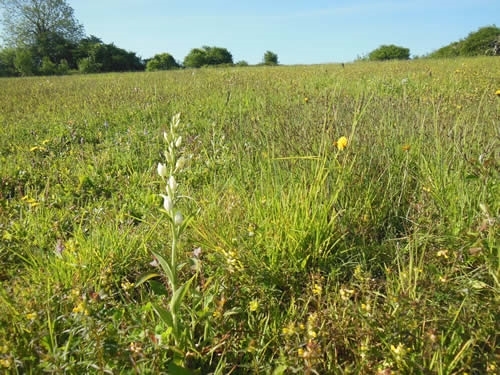
Sword-leaved Helleborine in species-rich field corner
Last week, I found an orchid I have never seen on the farm before, not even in England! Its name is Sword-leaved Helleborine (Cephalanthera longifolia) and, as you might have guessed, it is rare. In fact, my flower guide (I use Harrap’s Wild Flowers as my first choice in the field) tells me it is nationally scarce and listed as Vulnerable on The Vascular Plant Red Data List for Great Britain. It usually occurs very locally in deciduous woodland, occasionally scrub or even grassland. On Rotherfield, I found it in a field corner! Now, this is not any old field corner of course. I had noticed its diversity before and asked the farm if they could take an annual hay cut to improve it even further, which seems to have worked out fine.
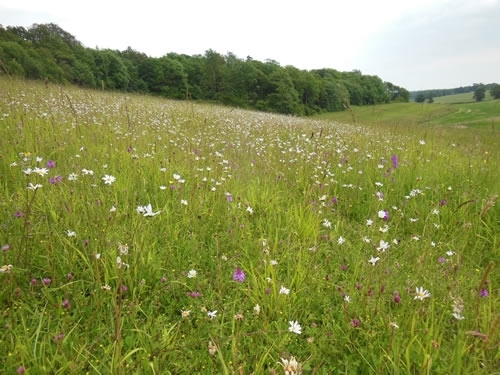
Pyramidal Orchid in species-rich semi-natural grassland
This just goes to show that any old bit of grass might have something nice to offer. On Rotherfield, field corners, grass margins, meadows and woodland rides (whether they are in an Agri-environmental Scheme or not) are managed in the best possible way for wildlife whenever feasible. In many cases, an annual hay cut is taken unless the grass margin is too narrow to do so with the machinery that is available.
Sheep grazing done by a local shepherd has been introduced on the biggest meadows, but for the smaller fields and the typically awkward field corners someone with a small and mobile flock of sheep still needs to be found. Both management measures are important to turn and keep a meadow species-rich, no matter on what soil type it is located.

Greater Butterfly Orchids in woodland ride
Spotting this rare orchid has prompted me to compile a list of all orchids that can be found on Rotherfield farms (please see table 1 below), including our demonstration area of course, but also Noar Hill Nature Reserve, which is owned by Rotherfield Farm but leased by the Wildlife Trust who is managing it. To date, I have recorded 15 different species of orchids across the area. That is a staggering 40% of all orchids found in Britain! Okay, having Noar Hill, one of the best short chalk grassland reserves in Britain on the doorstep, does help. Four of the 15 species are only found on Noar Hill, but that still leaves 11 species.
And who knows, with the high-quality habitat management that is going on at Rotherfield, some of the species that are still confined to the reserve, might soon set roots across other parts of the farm.
Table 1: the orchids of Rotherfield farms, including Noar Hill Nature Reserve.
* = species that are recorded on Noar Hill, 1 = species on Rotherfield that occur only on Noar Hill
| Name |
National abundance |
Habitat |
| Broad-leaved helleborine, Epipactis Helleborine |
Local |
Deciduous woodland |
| Sword-leaved helleborine, Cephalanthera longifolia |
Nationally scarce, vulnerable |
Deciduous woodland, occasionally grassland |
| Birdsnest orchid, Neottia nidus-avis |
Local, near threatened |
Deciduous woodland, especially beech |
| Common twayblade, Neottia ovata* |
Locally common |
Deciduous woodland, grassland |
| Autumn’s lady’s-tresses, Spiranthes spiralis*,1 |
Very locally common, near threatened |
On poor chalk grassland |
| Greater butterfly orchid, Platanthera chlorantha |
Local, near threatened |
Deciduous woodland, rough chalk grassland |
| Frog orchid, Coeloglossum viride*,1 |
Scarce and local in SE |
On short species-rich grassland |
| Pyramidal orchid, Anacamptis pyramidalis* |
Locally common |
Grassland on poor soils |
| Chalk fragrant orchid, Gymnadenia conopsea* |
Locally common |
Species-rich chalk and limestone grassland |
| Common spotted orchid, Dactylorhiza fuchsia* |
Locally abundant |
Wide variety of grassland, woodland rides |
| Southern marsh orchid, Dactylorhiza praetermissa* |
Locally common |
Marshy meadows, very occasionally chalky grassland |
| Early purple orchid, Orchis mascula* |
Fairly common |
Deciduous woodland, especially ancient woodland |
| Musk orchid, Herminium monorchis*,1 |
Nationally scarce, vulnerable |
Short, species-rich grassland on chalk or limestone |
| Fly orchid, Ophrys insectifera*,1 |
Scarce, vulnerable |
Varied habitats, mostly on chalk or limestone |
| Bee orchid, Ophrys apifera* |
Locally common |
Grassland on poor soils |
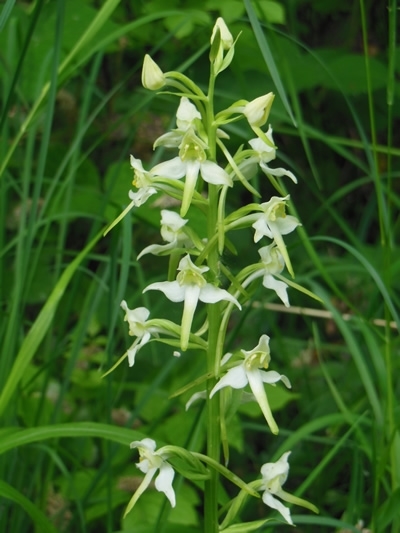
Greater Butterfly Orchid
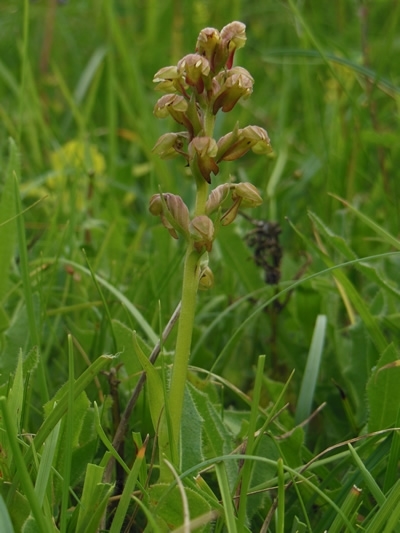
Frog Orchid
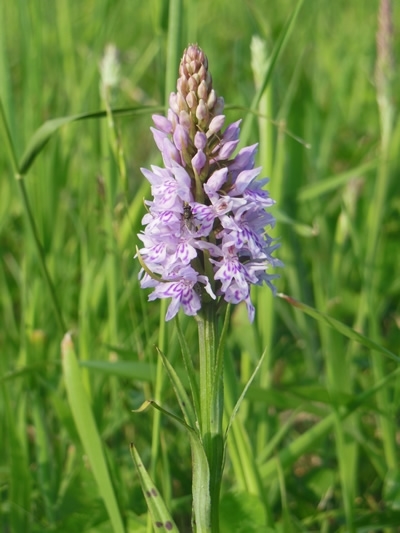
Common Spotted Orchid
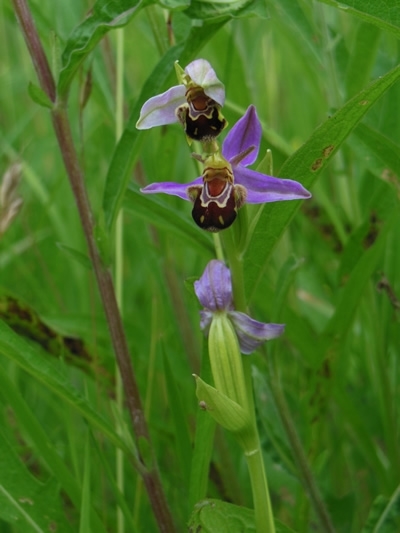
Bee Orchid

Southern Marsh Orchid
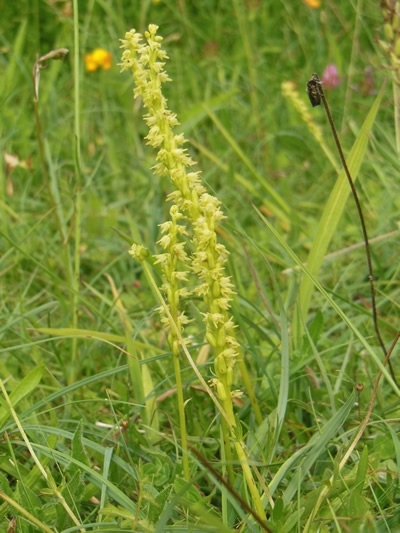
Musk Orchid
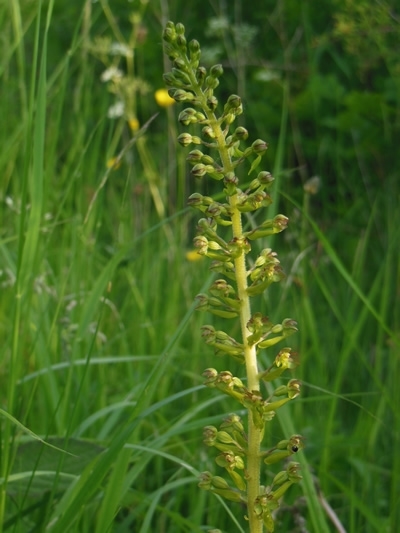
Common Twayblade
Please support our work at Rotherfield